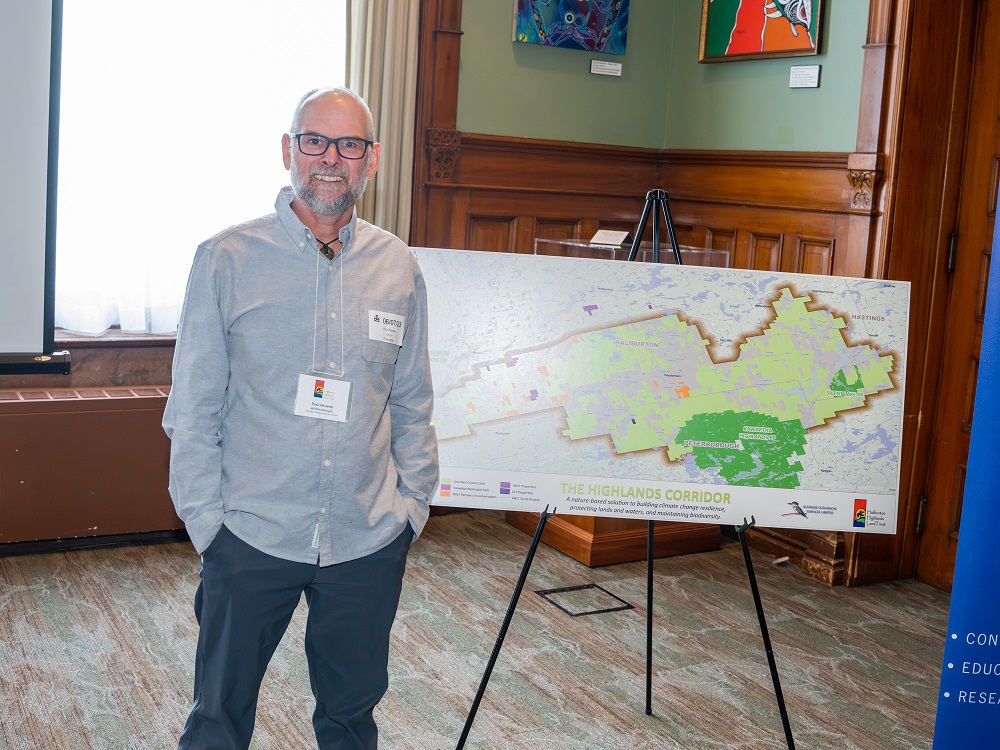The Haliburton Highlands Land Trust (HHLT) held a reception at Queen’s Park June 7 to introduce the Highlands Corridor project to provincial politicians and their staff.
In addition to local MPP Laurie Scott, speakers included MPP John Yakabuski, the parliamentary assistant to the minister of the environment, conservation and parks, HHLT board members, Sheila Ziman, Jennifer Dailloux, who is also deputy mayor of Algonquin Highlands, Peter Kendall, executive director of the Schad Foundation, John Harbinson, HHLT partner in conservation, leader of the Ontario NDP party, Marit Stiles, and MPP Sandy Shaw, the critic for environment, conservation and parks.
The keynote speaker was Paul Heaven, senior wildlife biologist and consultant at Glenside Ecological Services Limited.
“Paul presented several maps of the Highlands Corridor and made the case that the extensive Crown land that sits in the corridor be designated by the Province of Ontario as a conservation reserve,” the Land Trust said in a press release.
Conservation reserves are a type of protected area intended to safeguard significant natural and cultural features. Conservation reserves are an important part of the protected area system in Ontario, covering 1.4 per cent of the province. There are currently 259 reserves in Ontario, including two in Haliburton County.
“Paul outlined four compelling reasons to name the Highlands Corridor as a conservation reserve,” the release said.
First and foremost is biodiversity. “Through species at risk investigations and habitat assessments, we have come to understand the Highlands Corridor is rich in biodiversity providing habitat for over 40 species at risk, 25 provincially significant species and 43 regionally rare species,” the Land Trust said.
Second is flood mitigation. “The Highlands Corridor is comprised of provincially significant wetlands, rocky barrens and forests, including old growth forests such as the Catchacoma Forest. Through wetland mapping, we know the area has exceptionally high wetland representation at 17.9 per cent. For an area that has been subjected to flooding in 2013, 2016, 2017 and 2019, maintaining wetlands is a critical strategy to mitigating the impacts of flooding,” The Land Trust said.
Third, the Highlands Corridor significantly helps with long-term climate change resilience, the release added.
“The forests and wetlands sequester and store vast amounts of carbon. For wildlife communities, the Highlands Corridor maintains habitat connectivity, thereby allowing populations to move when faced with climate phenomena.”
Fourthly, they said the Highlands Corridor provides a significant opportunity to apply landscape conservation at a meaningful scale, with over 60,000 hectares of unceded Crown land extending between three provincial parks.
“Through raising the level of protection of the Crown land to conservation reserve, we can ensure these natural assets are not lost,” the Land Trust said.





